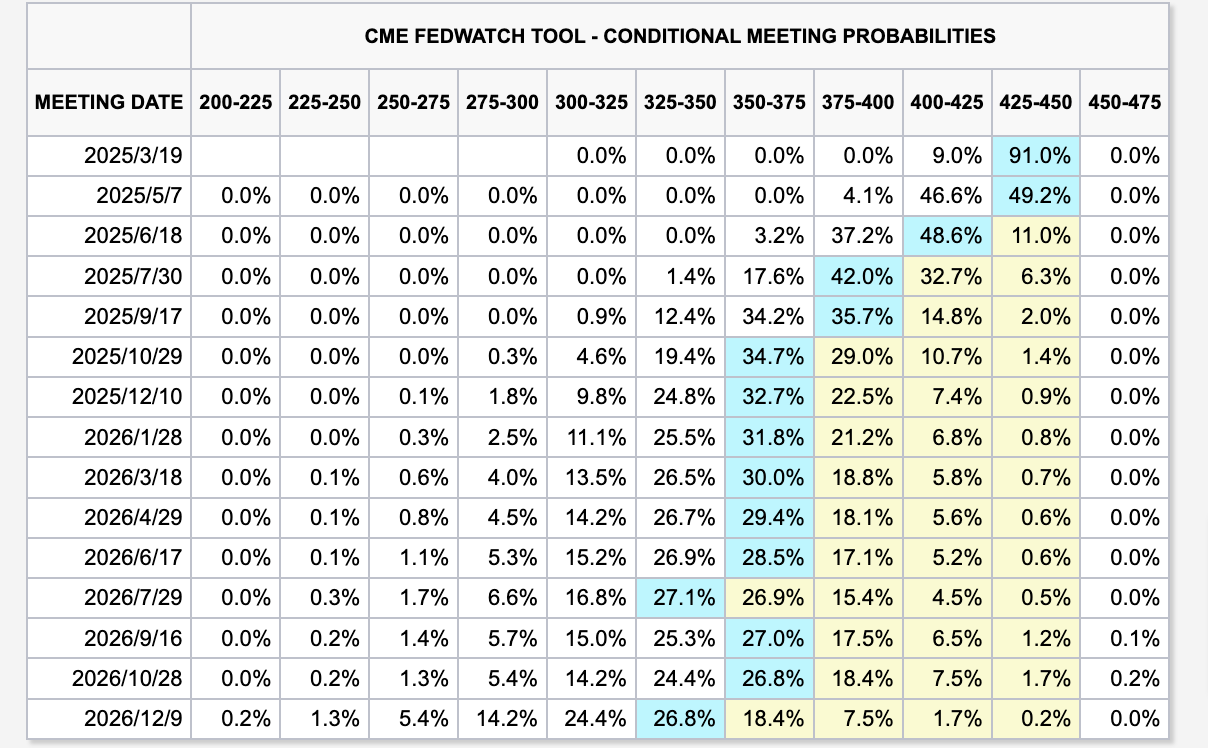The Federal Reserve (Fed) kept interest rates unchanged at 4.25% to 4.5% last month, saying it needs more time to wait for further changes in inflation and to observe how US President Trump's tariffs and other policies will affect the economy.
Waller: The Fed is unlikely to cut interest rates in March, but may do so later this year
According to a Reuters report, Federal Reserve Governor Christopher Waller said on Thursday (6th) at an event hosted by The Wall Street Journal that he does not believe the Fed will make a rate cut decision at the FOMC meeting on March 18-19, as it is currently difficult to gauge inflation data, especially given the huge uncertainty caused by Trump's economic and trade policies, and therefore it is unclear whether further rate cuts are necessary.
I want to see how the February inflation data comes in and learn more about the changes in tariff policy.
If you think inflation is moving towards the 2% target, you can start lowering interest rates, but I don't think it will be at the next meeting, but rather at some point after that.
Waller said that in the long run, the monetary policy outlook presented by Fed officials at the December meeting last year still seems reasonable, with the dot plot at the time forecasting two rate cuts each this year and next (a total of 1%), reaching the 3.25% - 3.5% range, and Waller believes "those numbers are fine" even if the actual results may be slightly different.
He further stated that over time, he still believes that rate cuts will bring good news, as these cuts are due to easing inflationary pressures, not to address economic weakness. However, Waller did acknowledge that recent data has shown a trend of economic weakness, and he is observing whether this will be reflected in broader government data.
Further reading: Moody's warns: Trump's tariffs & immigration policy could plunge the US into stagflation, forcing the Fed to raise rates
Fed official: Trump's tariff policy brings greater inflationary risks
Currently, the market and economists are generally concerned that as the Fed's efforts to fight tariffs have stalled in recent months, Trump's policy of broadly raising tariffs will instead push up inflation and may dampen economic growth, with concerns about the US falling into "stagflation" this year having increased noticeably.
The impact of Trump's tariff policy on inflation has clearly become a key consideration for Fed officials in their monetary policy. New York Federal Reserve President John Williams said on Tuesday: "Based on the information we have today, and considering all the uncertainty around us, I do indeed factor in the impact of tariffs on inflation and prices, because I think we'll see some of those effects later this year."
Philadelphia Federal Reserve President Patrick Harker said in a speech on Thursday that although inflation has been declining, "I'm concerned that inflation now faces risks."
However, Waller has recently hinted at a more optimistic view of the tariff impact, publicly stating on February 17th: "Any tariff action will only 'moderately' raise prices, and the price increase will not be sustained," which seems to suggest that he advocates not needing to take monetary policy measures to address the tariff impact.
However, Waller also acknowledged that the transmission of this round of tariff restrictions may be more difficult, as "a 25% tariff is hard to offset from profits," and the ultimate cost will be borne by American consumers in the form of higher prices.
Fed officials estimate two rate cuts this year
Overall, due to the continued high uncertainty surrounding Trump's tariff agenda, most Fed officials are cautious about the impact of tariffs on monetary policy. Powell reiterated multiple times last month in congressional hearings that the central bank is "in no rush to cut rates," so the market generally believes the probability of a Fed rate cut in March is very low.
The CME Group's Fed Watch tool shows that the probability of the Fed keeping rates unchanged again in March is as high as 91%, while there is divergence in bets for May, with 49.2% of traders expecting another freeze and 46.6% expecting a 25 basis point cut, and the probability of a 25 basis point cut to the 4.0-4.25% range in June exceeds 48.6%. The market also expects another 25 basis point cut in July and October, with the potential for a total of 3 rate cuts this year, a more optimistic rate cut expectation than last month.
Atlanta Federal Reserve President Raphael Bostic also stated in late February that he supports the Federal Reserve pausing rate cuts in March, and predicted two rate cuts this year. However, given the high level of uncertainty due to potential changes in trade, immigration, energy, and fiscal policies, there could be more or fewer rate cuts to ensure that inflation does not suddenly surge.
Given that some of President Trump's policies may push up inflation, while other policies such as taxes and regulations may promote investment, Bostic believes it is appropriate to pause rate cuts in the short term and observe the economic trajectory.








